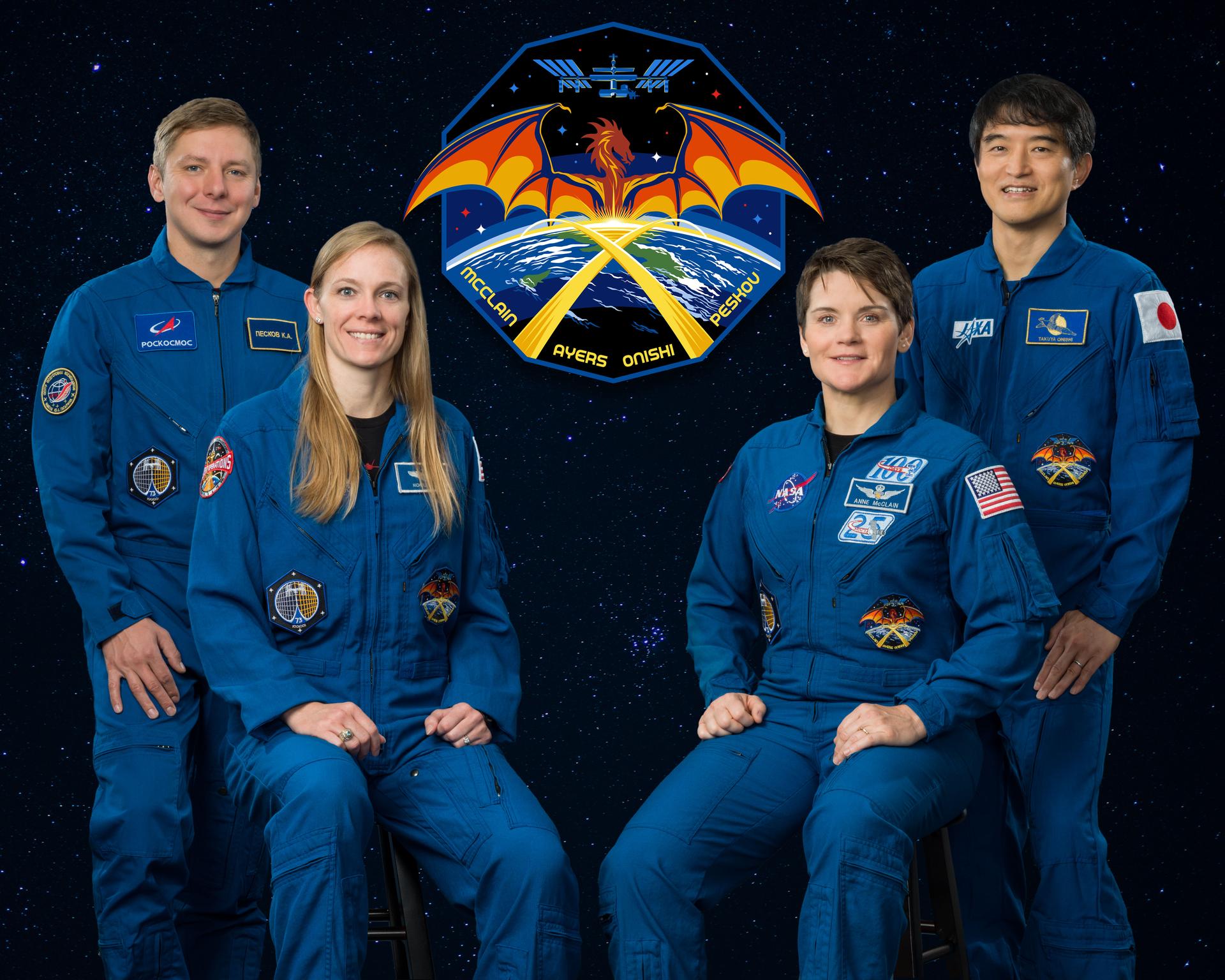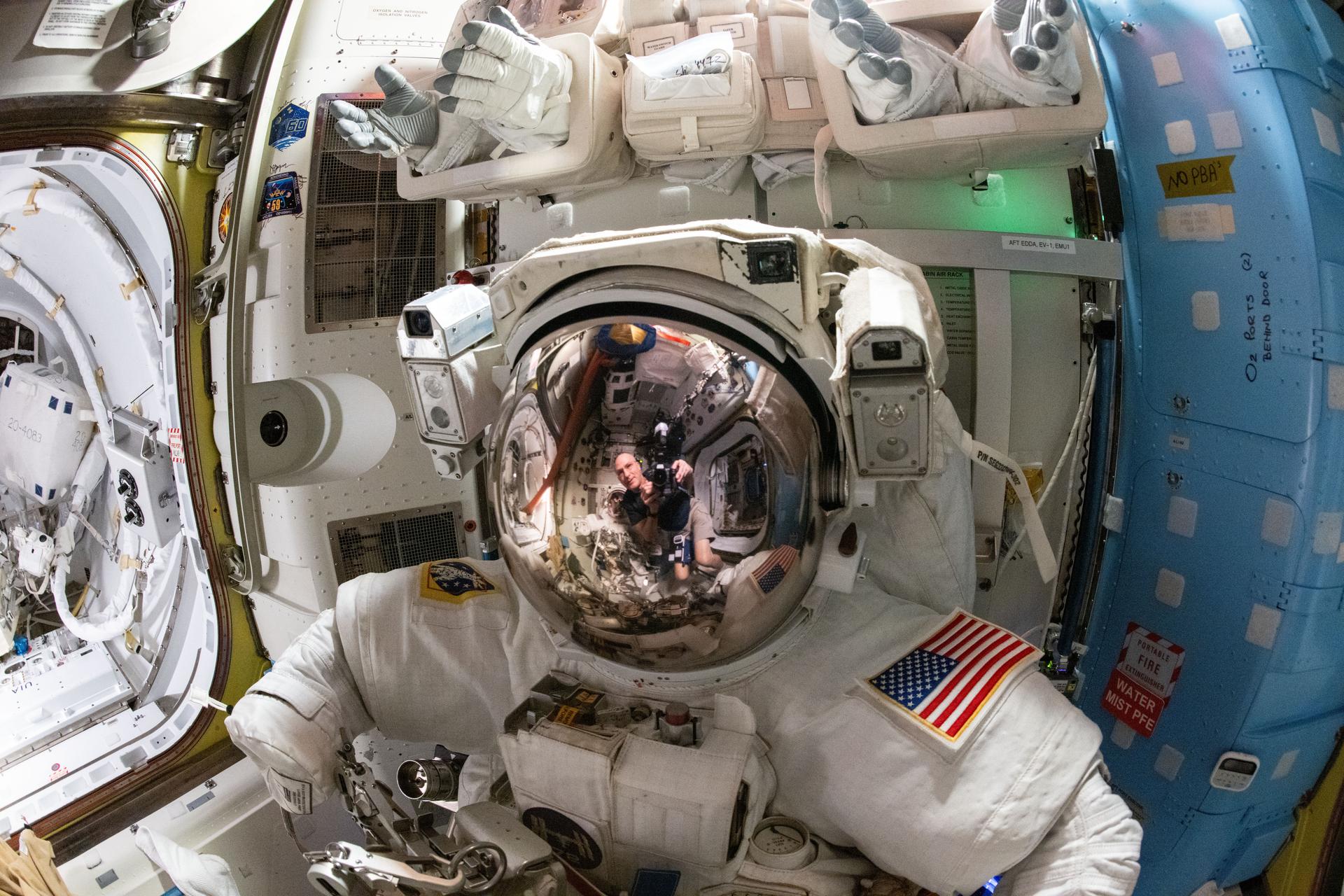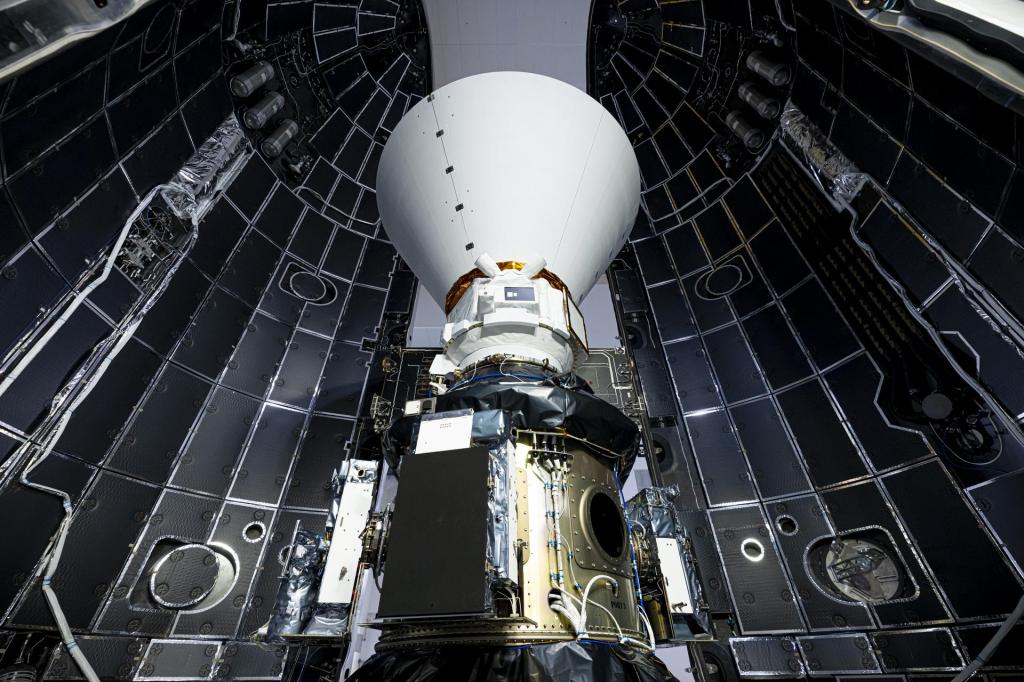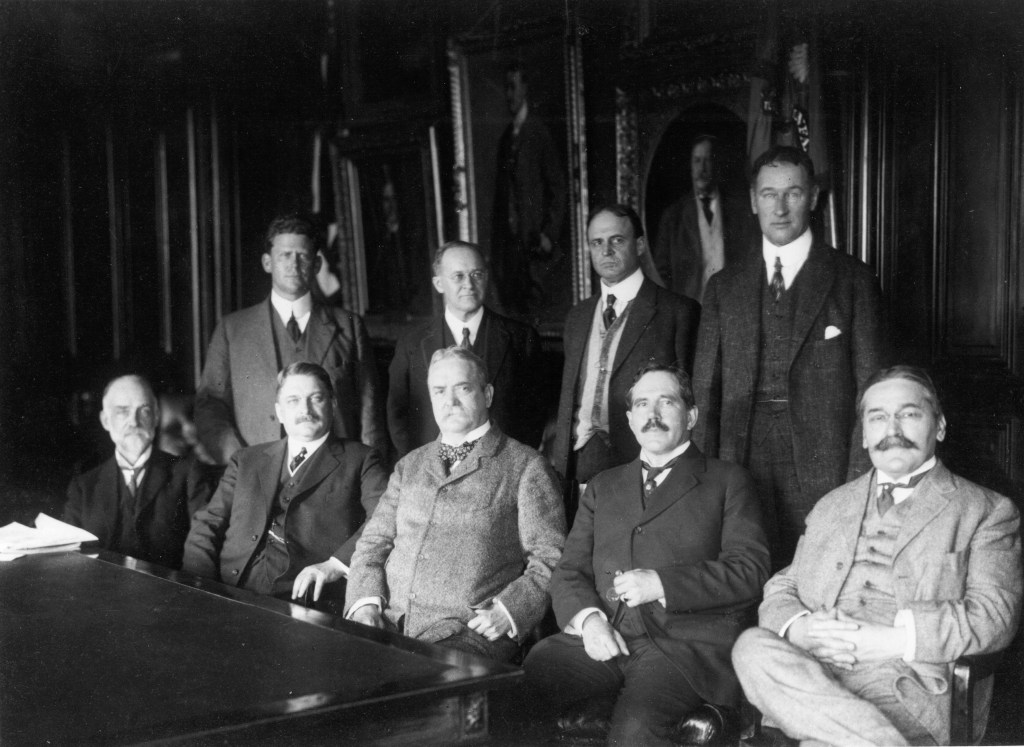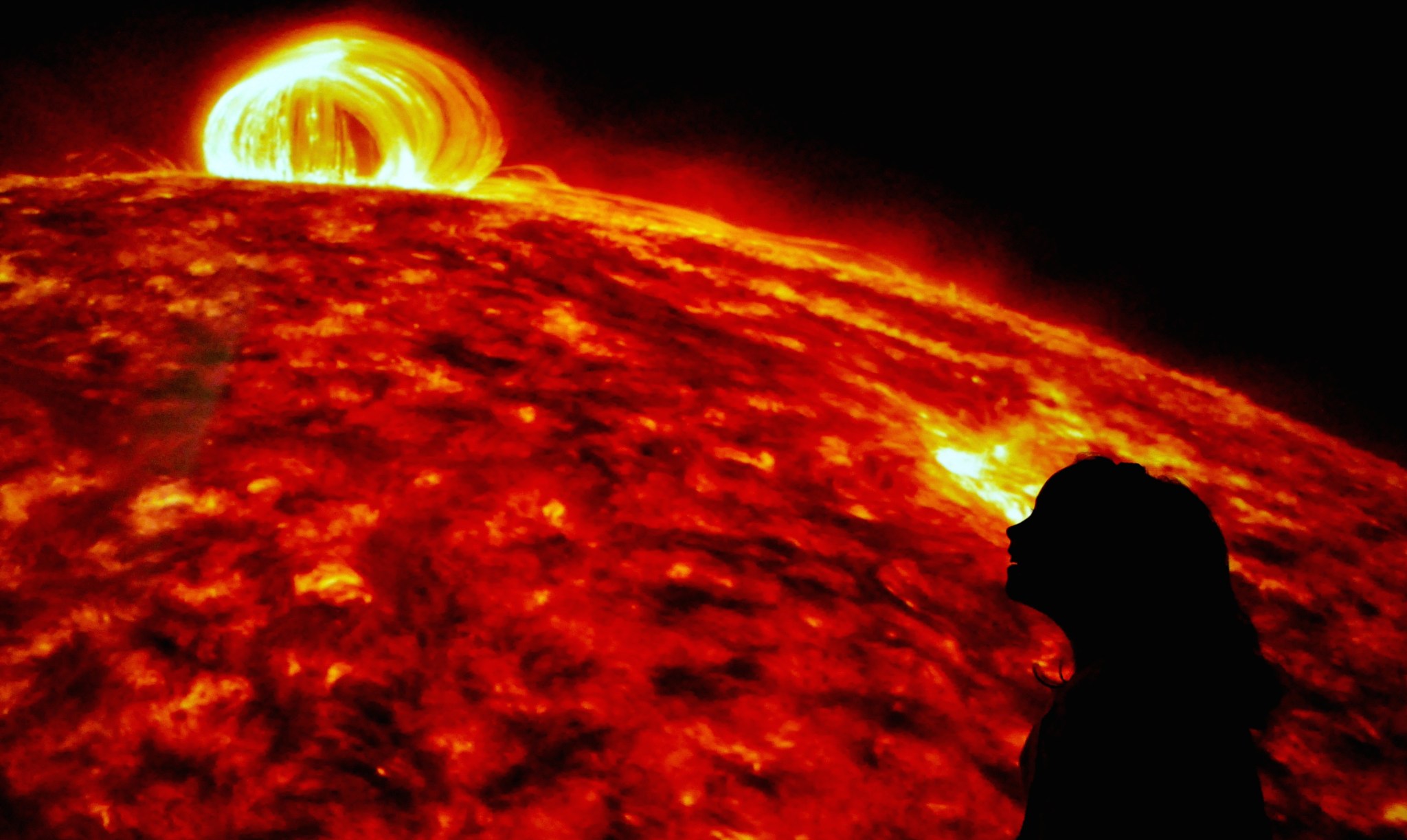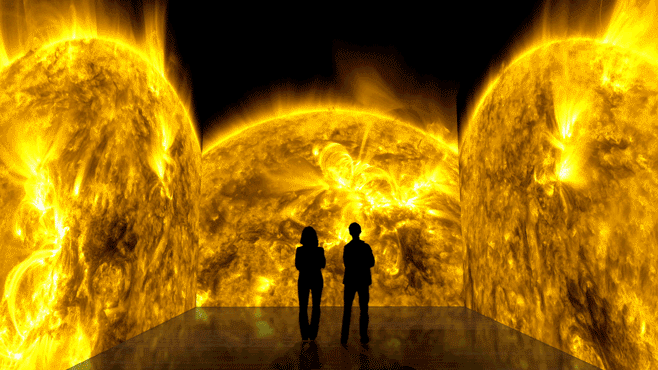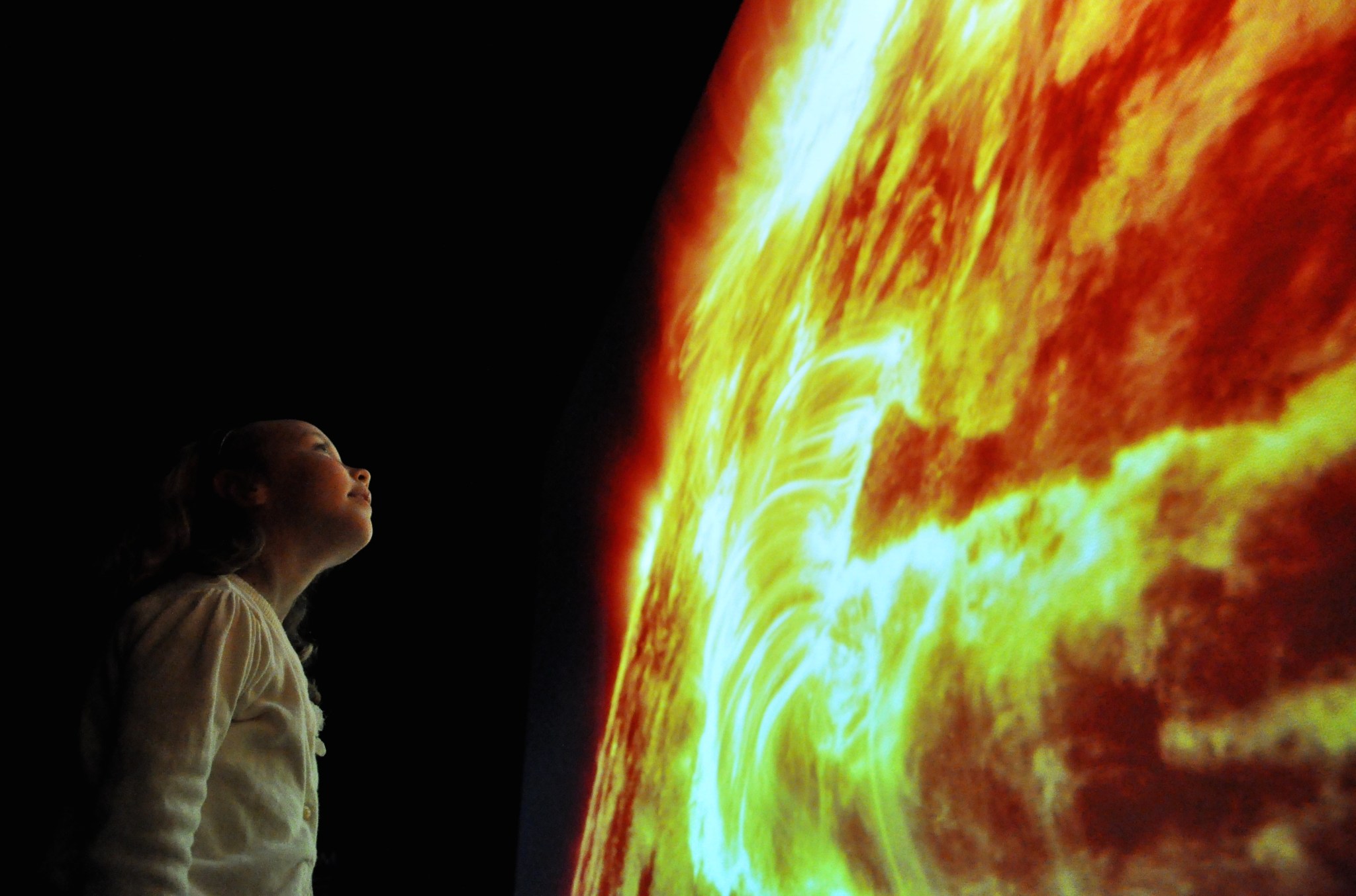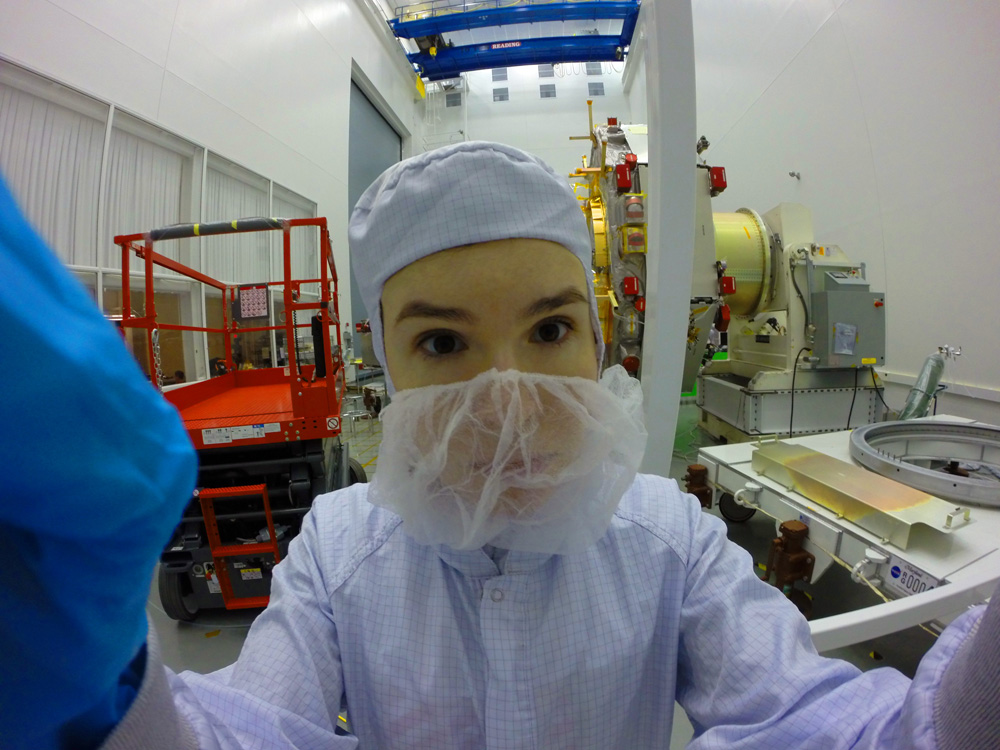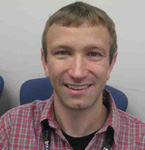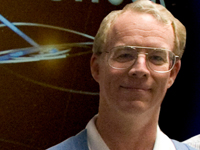Solarium — an innovative new piece of video art — puts you directly in the heart of this mesmerizing show. The art taps into a vast reservoir of imagery from NASA’s Solar Dynamics Observatory.
SDO watches ultraviolet light invisible to the naked eye to track how material dances through the solar atmosphere. SDO takes a picture almost once a second — no other solar observatory has ever collected data on the entire sun at the speeds with which SDO does. Each image has eight times as much resolution as an HD TV.
Scientists use SDO to trace how material courses through the layers of the solar atmosphere, the corona, powering gigantic burst of x-rays called solar flares and eruptions of solar particles that swirl upward and fall back down — or sometimes escape the sun’s gravity altogether, surging out into space. The observatory records the solar images as a binary code, ones and zeros, which computer programs can translate into black-and-white pictures. Scientists colorize the images for realism, and then zoom in on areas of interest.
Each of SDO’s colors relate to a wavelength of ultraviolet light, which in turn relates to a specific temperature of material on the sun. Each color highlights different events on the sun, for example teal is best for seeing flares, and yellow is best for seeing the majestic loops hovering in the sun’s atmosphere.
To scientists, SDO provides unprecedented information on the star we live with; to the rest of us, it provides breathtaking images. Solarium makes viewers stop and stare, instantly transported from where they had been moments earlier.
Installations
Current
Clark Planetarium, Salt Lake City, Utah (semi-permanent through 2026, beginning Oct. 22, 2016)
Virginia Air and Space Center, Hampton, Virginia (permanent exhibition, beginning July 1, 2015)
NASA’s Goddard Space Flight Center – Visitor Center, Greenbelt, Maryland (permanent exhibition, beginning Feb. 11, 2015)
Past
Musée régional de Rimouski, Québec, Canada (June 3, 2019 – Jan. 26, 2020)
American Museum of Natural History, New York City (July 20, 2019)
March 24, 2018 — one day only: American Museum of Natural History, New York City
Aug. 18-21, 2017: Newberry Eclipsefest – Newberry Opera House, Newberry, South Carolina
Aug. 17-21, 2017, Fort Houston, Nashville, Tennessee
March 18, 2017 — one day only: American Museum of Natural History, New York City
December 2016: Aldo Leopold Nature Center, Monona, Wisconsin
July 15-17, 2016: Artscape, Baltimore, Maryland
April 30 – May 3, 2016: Filmatic Festival, San Diego, California
March 19, 2016: AMNH Sun Earth Day, New York City
Oct. 10, 2015 – Spring 2016: Louisiana Art and Science Museum, Baton Rouge, Louisiana
May 31, 2015, 10 a.m. to 6 p.m.: World Science Festival, Ultimate Science Street Fair, New York City
Jan. 31-May 17, 2015: Part of the “Astronomical” exhibit, Center for Creative Photography, Tucson, Arizona
March 21, 2015 — one day only: American Museum of Natural History, New York City
Nov. 1-30, 2014: Georgia State University’s Window Project, Atlanta
Sept. 13, 2014: King Street Arts Festival, Alexandria, Virginia
For More Information
Please direct questions about Solarium to Genna Duberstein of NASA’s Goddard Space Flight Center.
For images and video of Solarium at Goddard’s Visitor Center and other venues, please visit http://svs.gsfc.nasa.gov/goto?11745.
About the Artists
This is government-produced footage, available for free to the world — but without the proper handling, you are not able to feel it. The installation is the work of two NASA video producers and a data visualizer. One full minute of footage is the result of roughly 10 hours’ worth of work.
Genna Duberstein is a multimedia producer who works at the intersection of art and science. Her award-winning video and graphic design has shown internationally, aired on PBS, and has been featured in Vanity Fair, WIRED, The Atlantic and National Geographic. She holds an M.F.A. in digital media from American University and a B.A. in Spanish and studio art from The Ohio State University.
She draws on her background in fine art, multimedia production and social media marketing to create and distribute a variety of work. From high-tech operating rooms to glamorous fashion runways, congressional events on Capitol Hill to makeshift migrant camps, Genna has covered many interesting places.
Now, she documents happenings on the most dangerous and challenging locale yet: the sun. She is the lead multimedia producer for heliophysics at NASA’s Goddard Space Flight Center in Greenbelt, Maryland.
She lives in the Washington, D.C., area, where she enjoys long runs and eating cookies, though not at the same time.
Scott Wiessinger is a heliophysics and astrophysics video producer at Goddard. He grew up in a family of science educators and artists. From the age of three, Scott planned to be a paleontologist until creating videos for school projects made him realize the arts drew him even more strongly. Scott was able to find a way to combine art, science and education with an M.F.A. in science and natural history filmmaking from Montana State University. He fills his free time with cycling, climbing, travel and raising two children with his wife.
Tom Bridgman spent his formative years exploring science, pseudoscience and skepticism in a small farm town armed with not much more than an Edmund Scientific catalog, a Gilbert chemistry set, a small reflecting telescope and memberships in the Library of Science and the Science Fiction Book Club…and local dumps full of all kinds of throw-away electronics and other engineering parts. He managed to reach adulthood without losing any fingers or blowing up his parents’ garage. After earning a Ph.D. in physics and astronomy at Clemson University where he studied nuclear astrophysics and black holes, Tom went to work as an instrument specialist for the Compton Gamma-Ray Observatory. A fortuitous timing of budget cuts sent him to his current day-job at Goddard, where he creates data-driven visualizations of space science data for education and public outreach.
The Sun and Heliophysics
The Science Mission Directorate Heliophysics Division studies the nature of the Sun, and how it influences the very nature of space — and, in turn, the atmospheres of planets and the technology that exists there. Space is not, as is often believed, completely empty; instead, we live in the extended atmosphere of an active star. Our Sun sends out a steady outpouring of particles and energy — the solar wind – as well as a constantly writhing magnetic system. This extensive, dynamic solar atmosphere surrounds the Sun, Earth, the planets, and extends far out into the solar system.
Learn More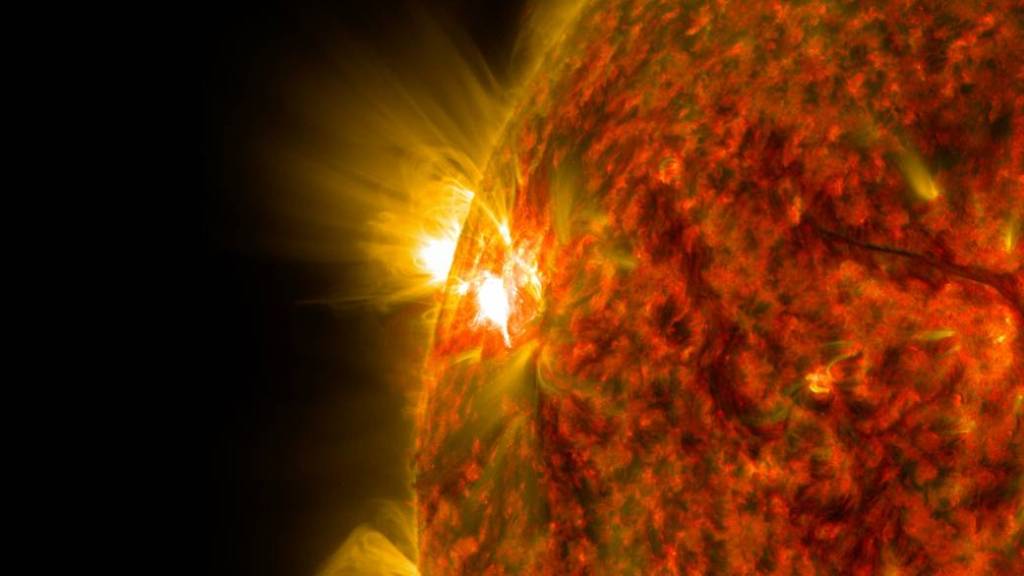
Explore the Universe from your Inbox
Subscribe to the NASA newsletter
We will never share your email address.





